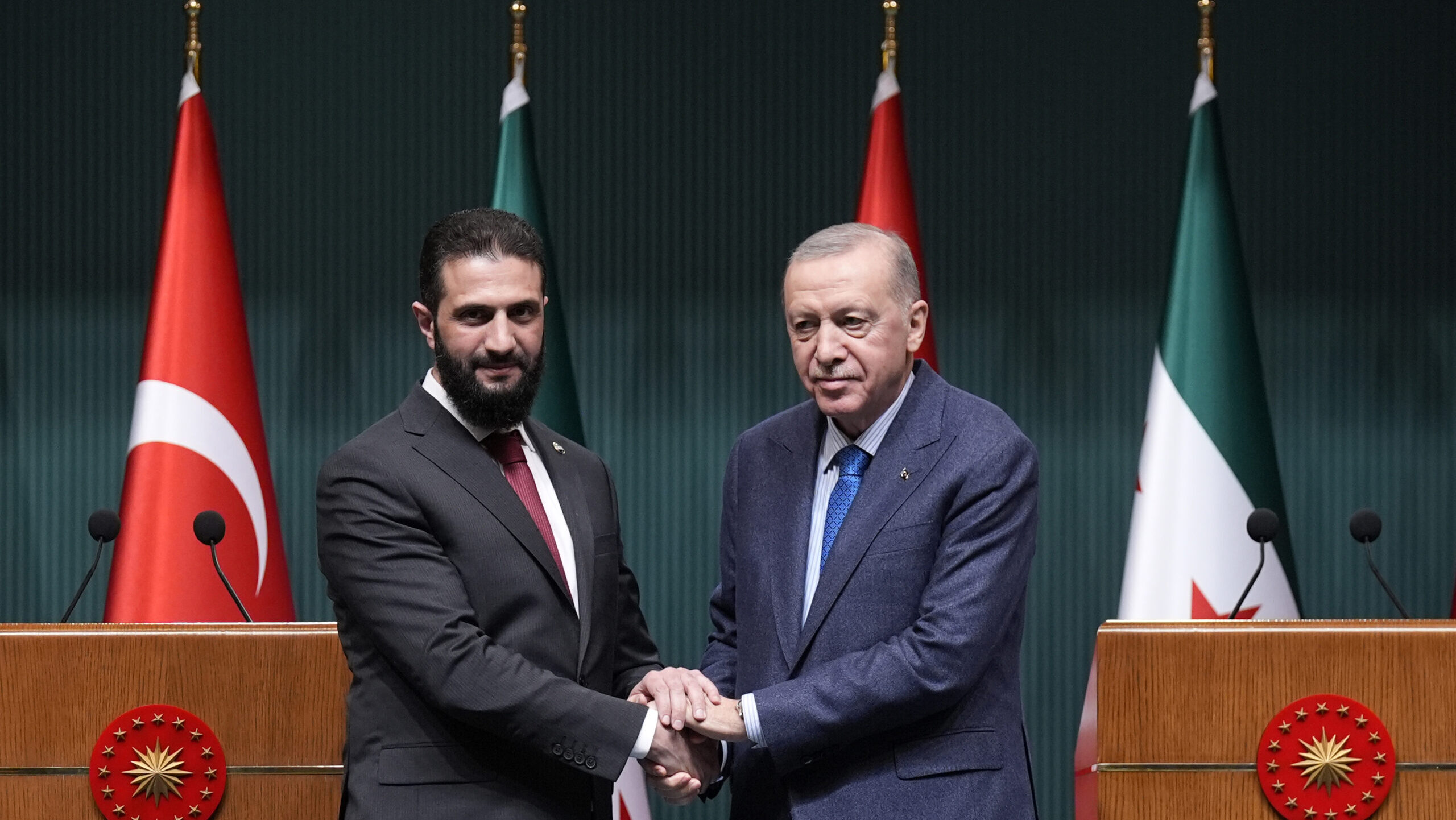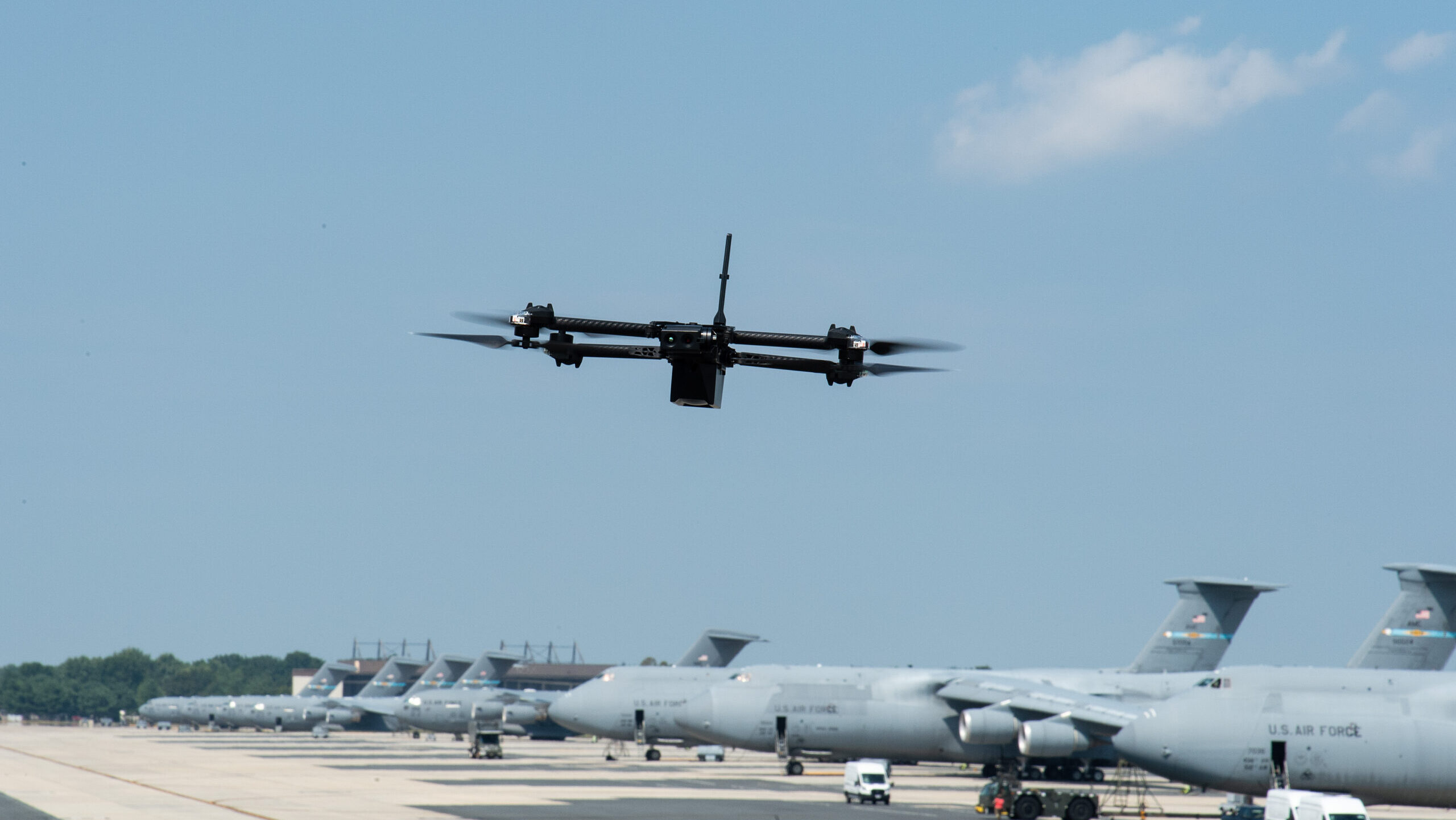As industry ponders Trump tariff costs, Shaheen seeks info on Pentagon impact
“We’ve got protection in our contracts from tariffs,” one defense industry executive told Breaking Defense. “There are fixed priced contracts that that would hurt on, but for the most part, we’re not super worried about it, to be honest.”


U.S. President Donald Trump holds up a chart of “reciprocal tariffs” while speaking during a “Make America Wealthy Again” trade announcement event in the Rose Garden at the White House on April 2, 2025 in Washington, DC. Touting the event as “Liberation Day”, Trump is expected to announce additional tariffs targeting goods imported to the U.S. (Photo by Chip Somodevilla/Getty Images)
WASHINGTON — A senior Democrat on the Senate Armed Services and Appropriations Committees is raising alarm bells about the Trump tariffs’ potential impact to the defense industry, saying that higher prices could hurt Defense Department purchasing power and squeeze small companies.
In a Tuesday letter to Defense Secretary Pete Hegseth, Sen. Jeanne Shaheen, D-N.H., wrote that the tariffs will exacerbate the fiscal pressures the Pentagon must already contend with, potentially growing the size of the budget without providing additional capability.
“In the short term, the announced tariffs alone will increase costs for U.S. defense industrial supply chain companies,” she wrote. “DIB [defense industrial base] companies and their suppliers may be forced to absorb those costs which could drive more companies and jobs out of the defense industrial supply chain, stifling innovation. In the long term, tariffs will drive up DOD’s contracting and procurement costs, limit DOD buying power and ultimately harm the warfighter and our military readiness.”
Shaheen also questioned whether the Pentagon would be able to accurately determine the full scope of the tariffs’ impact to its supply chain, noting that about 12,000 companies make up the second and third tiers of the US aerospace industrial base — many of them located outside of the United States.
“With the globalization of supply chains, these suppliers and their goods come from a wide array of places. Some foundational industrial supply chain sectors, like optical instruments, mechanical gears, welding equipment and printed circuit boards source a large part of their components from outside North America,” she wrote.
Shaheen ended the letter with a list of questions, asking Hegseth to provide information about critical imports subject to tariffs, the monetary impact to Defense Department contracts, how the department is approaching fixed-price contracts where costs have grown as a result of the tariffs, and whether Chapter 98 of the Harmonized Tariff Schedule can still be used by defense contractors to purchase critical materials without duties.
Industry Reaction To Tariffs Cautious
Shaheen’s letter comes on the heels of the annual Sea Air Space conference last week, where attendees were abuzz about the tariffs, announced April 2 in what President Donald Trump called “Liberation Day.”
Overwhelmingly, industry and Navy sources told Breaking Defense that they were still working to understand the ultimate effect of the tariffs on the health of the industrial base and on the US military’s buying power.
But as a sign of how unsettled the matter is, day three of the conference brought word that Trump was changing the tariff plan, announcing a 90-day pause on all reciprocal tariffs besides China. (A 10 percent universal tariff remains in effect.) That uncertainty is giving industry planners headaches.
“It’s so new right now,” George Whittier, CEO of Fairbanks Morse Defense, said in an interview April 7 on the show floor.
“How long is this going to last? What is the impact? There’s no company here that’s going to say, ‘Okay, I’ll take that cost, that tariff cost, and I’ll just absorb it.’ Zero people are going to say that,” he said. “So all of that’s going to get passed along, which means that the end result is the Navy is spending more.”
Fairbanks Morse, a Wisconsin-based firm that manufactures ship engines and other components for vessels, sources about 75 percent of its supply chain in the United States but purchases some components from Europe, Whittier said. The company had recently received notice of tariff impacting a davit made for a Navy amphibious ship.
“We pushed that onto the Navy. And the Navy said, ‘Hey, you can’t do that.’ And we said, ‘What do you mean, we can’t do it? We’re not paying for it,” Whittier said. “And so right now, we’re going back and forth with them.”
Other industry sources expressed confidence that the tariffs would activate economic price adjustment clauses within contracts — forcing the Pentagon to make up the higher costs. Some expressed hope that the Trump administration would eventually include a “carve out” that would exempt defense products from the tariffs.
“We’ve got protection in our contracts from tariffs,” said one defense industry executive. “There are fixed priced contracts that that would hurt on, but for the most part, we’re not super worried about it, to be honest.”
While supply chain constraints in the defense sector appear to be lessening, tariffs have added some uncertainty to the mix, said Byron Callan of Capital Alpha Partners in a Sunday note.
“Contractors may be able to pass on some of these costs to DoD, depending on clauses in existing fixed-price contracts,” he said.
While the tariffs have spurred anxiety in industries such as commercial aerospace and automotives, Seth Seifman of JP Morgan wrote in a Tuesday note to investors that defense stocks seem to be performing relatively well.
“Since the Liberation Day, moreover, all our defense exposed stocks have outperformed and nearly all of them are up,” he said. “We are not looking for very strong results or guidance increases in defense this quarter but if the budget outlook remains favorable and DOGE momentum wanes further, it may not matter, with defense stocks offering a haven while macro and tariff risks gather.”










































































































































































